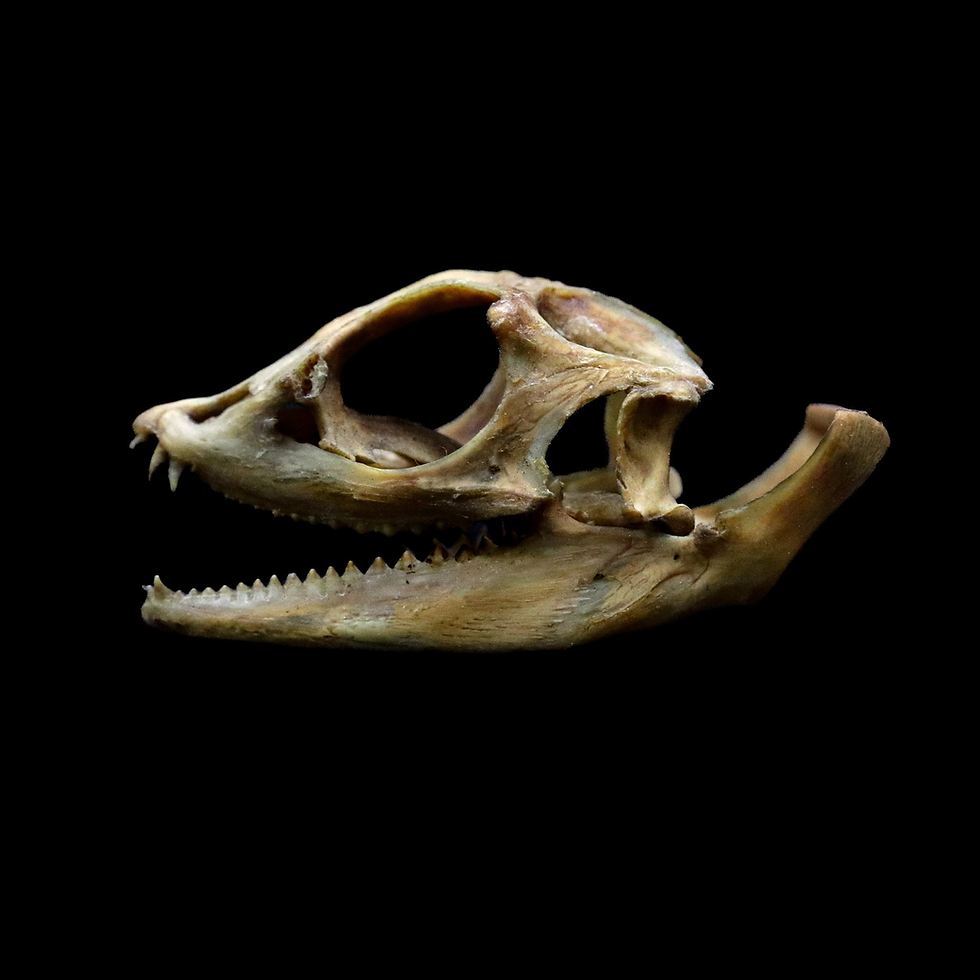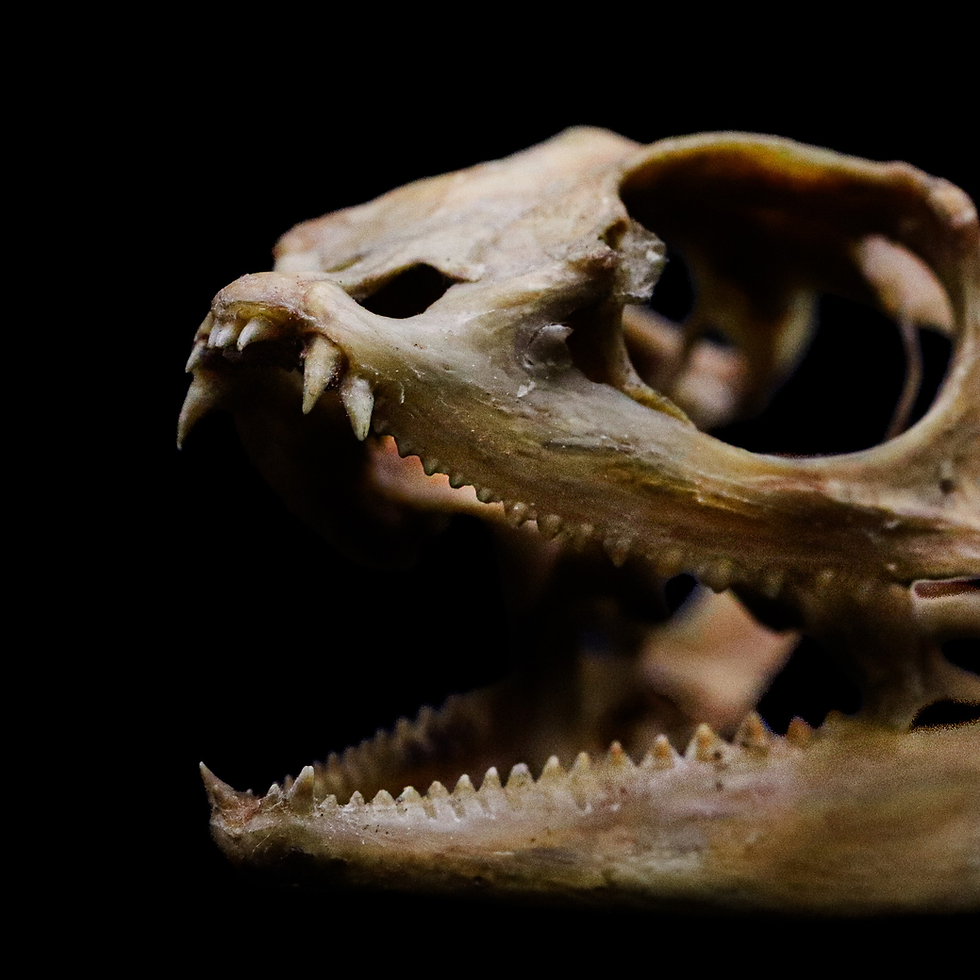Specimen Showcase | Meet the Frilled Lizard: A Real-life Dinosaur-looking Creature🦕!
- Hong Kong Biodiversity Museum

- Mar 10
- 3 min read
Get ready to meet one of the coolest lizards on the planet – the frilled lizard🦎! Imagine walking in the Australian outback and bumping into what looks like a tiny dinosaur. That’s a frilled lizard, known as 𝘊𝘩𝘭𝘢𝘮𝘺𝘥𝘰𝘴𝘢𝘶𝘳𝘶𝘴 𝘒𝘪𝘯𝘨𝘫𝘪𝘪 (Gray, 1825). This is not just any ordinary lizard; as its look suggests it jumped straight from a dinosaur movie! In “Jurassic Park”⛲️, which should have been named Cretaceous park to be accurate, dilophosaurus are depicted with a neck frill and the ability to spit venom, traits it didn’t actually possess according to fossil records - another liberty taken in that fiction. This portrayal closely resembles the modern Frill-necked Lizard, which has a distinctive neck frill that it displays when threatened☂️. The frilled lizard can grow up to about 85-90 cm (that’s as long as a baseball bat!) and have a neck frill as wide as a dinner plate🍽️when it’s opened up. How cool is that😎?

The frilled lizard has a super special trick up its neak. Their neck frill is like a magic cape that pops open and shows off bright colors🎨to scare away predators or to greet🤝other frilled lizards. While the frill is an effective mechanism for scaring away potential predators, it also plays a crucial role in the lizard’s territorial and mating displays❤️. Moreover, the frill isn’t used solely for intimidation; it also has a practical function in regulating the lizard’s temperature. On hot days, the frill helps to keep the lizard cool, while on colder days❄, it aids in retaining warmth🧥, showcasing its adaptability to varying environmental conditions. It’s like having a built-in fan and heater! Frilled lizards are amazing at blending in with their surroundings. Their skin has colors that make them very cryptic when standing against trees and ground. This camouflage makes them super sneaky both when they’re hunting and hiding. When their frill is folded back, these lizards are well-camouflaged in their natural habitat. Their coloration typically reflects the colors of their environment, helping them to blend in with their surroundings.

Another distinctive feature of these lizards is their ability to run on two legs🏃, a feat known as bipedal locomotion. Unlike many other lizards, Frill-necked Lizards can run on their hind legs. When threatened, they open their frills and run upright to intimidate the threat or to escape🦹. This ability gives them a distinctive and somewhat comical appearance when running. This makes them one of the fastest and funniest🤣 runners in the lizard world. Scientists discovered that the emergence of bipedalism in lizards might be an unintentional result of rapid acceleration. When these lizards accelerate forward⏩, the force at the hind legs propels the back of the body forward. However, the inertia in the front part of the body resists this motion, preferring to remain stationary.
You may wonder what’s on the menu📖 of a frilled lizard? Insects, and lots of them! They love munching on ants🐜, beetles, and sometimes even spiders🕷️. They’re like the insect clean-up🧹 crew of the forest, keeping everything balanced. They use their quick reflexes and sticky tongue👅 to catch prey.

Frilled lizards are typically found in the tropical and warm temperate forests and savanna woodlands of northern Australia and southern New Guinea. They are excellent climbers🧗 and spend a significant amount of time in trees - which is also a good place to find insects. Frill-necked Lizards, being ectothermic, depend on external heat🔥 sources such as the sun🌞 for their body warmth. Sunbathing is a common behavior for them, allowing them to warm up and get ready for their daily activities. It’s like having a natural solar-powered battery🔋!

Frilled lizards are not just amazing to look at🤣, they are also super important for the ecosystems they live in. If you would like to meet one of these dinosaur-looking creatures🦖, come and visit the Hong Kong Biodiversity Museum🤩!
Text: Mei Luo




Comments